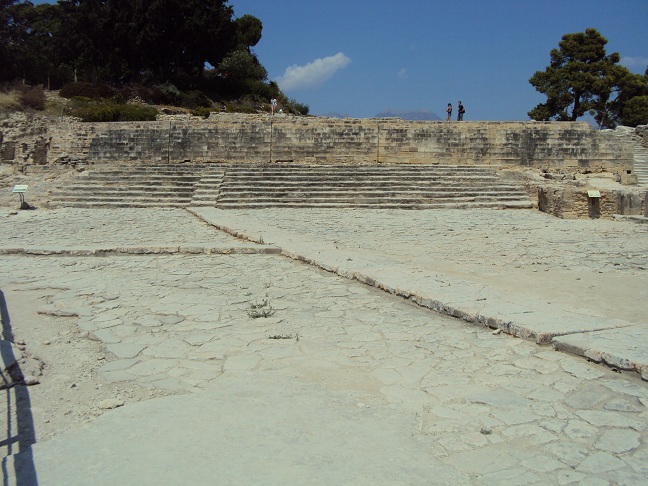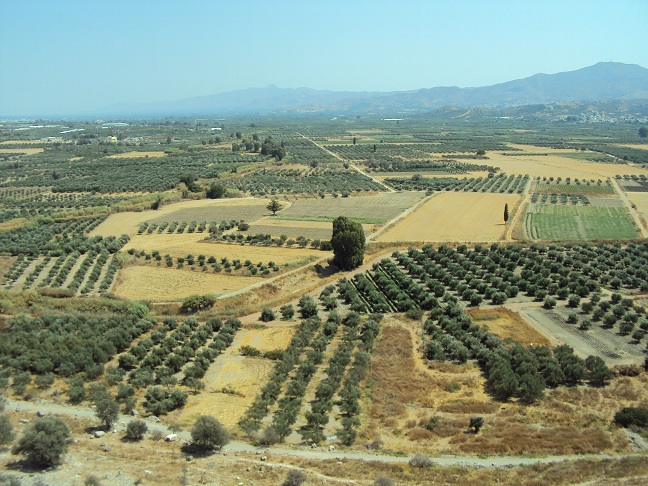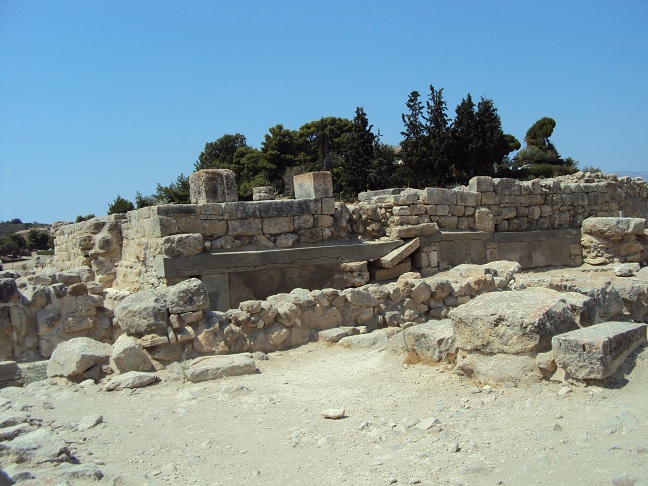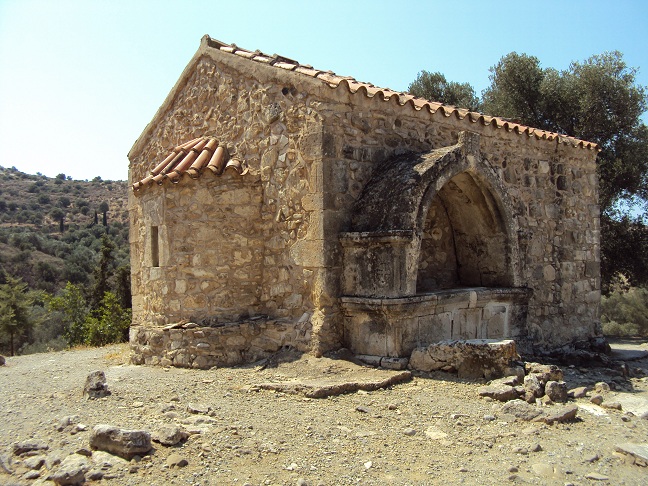The only difficulty in getting the rented car was having to hitchhike to the nearest town (22 km) to make the arrangements, without yet being certain that we would get it. But we made the trip in two rides. There was no hassle. We got a little Nissan manual shift.
So we made for the remaining planned sites: Aghia Triada and Phaestos.

The West Plaza at Phaestos — clearly a place of assembly. The function of raised pathways is unknown.
Phaestos conformed to the pattern set by Knossos, thought it had some distinctive features, and the site has some later intrusions from the Hellenistic era. I was surprised by nothing. The site has much less visual drama for the visitor, because of the absense of fanciful reconstructions like those Evans made at Knossos. But to the archaeological eye, it is very rich. The “theatrical” area of the western plaza is particularly interesting to me. It looms much larger than it’s equivalent at Knossos, and the masonry is particularly fine. It definitely suggests an assembly place much more than a mere passage from one place to another.
But Aghia Triada was another kettle of dolphins. Everything about the place is bizarre. Convention has it that it was a “villa” rather than a “palace.” I don’t know what the hell it was, but it wasn’t a villa. Some of the structures are so enigmatic that I’ll be thinking about them for a long time. I took lots of photographs of all the sites, and I’ll probably pore over them for a year before I really understand the things I’ve seen in the last few days. [see the Phaestos and Aghia Triada galleries, following]
For example, there’s a building with an immense stone bench filling most of it, but facing what are clearly two double doors. The hinge holes are clearly visible, and they could be nothing other than a set of “French doors,” but the room the open into is barely wider than the bench it contains. The drainage tunnels are very complicated, and much fancier in construction than I had imagined.
Right within the site of Aghia Triada, only a few meters from the main buildings, there is the well-preserved Byzantine church of Agios Georgios Galatas which was reconstructed in 1302 and contains frescoes of the fourteenth century. The church is obviously still in use, since we saw recent votive offerings inside.
But these things will bore most of my readers. This morning’s jaunts brought to a close the archaeological part of my visit, except for a tholos tomb that we came across accidentally while lost in the back roads. We devoted the rest of the day to driving around the mountains. First we poked into the south central coastal range. It’s very rough country, and we were forced to turn back when the roads turned into four-wheel-drive grade. We then turned our attention to the central range, coming as close as we could in a car to the highest mountain in Crete, known to outsiders as Mt. Ida (but it isn’t the name used by Cretans). We drifted westward into a maze of deep valleys, volcanic plugs, and fold mountains. It would be hard to imagine roads more devious, a landscape more labyrinthine, views more spectacular, or villages more precariously perched upon crags and mountainsides.
People are pleasant. Most Cretans can manage a bit of English, especially if you trouble to open with formalities in Greek. There is nothing visible on the island of the creepy police state we witnessed in Athens. In fact, I don’t recall yet seeing a single cop or police car.



0 Comments.